

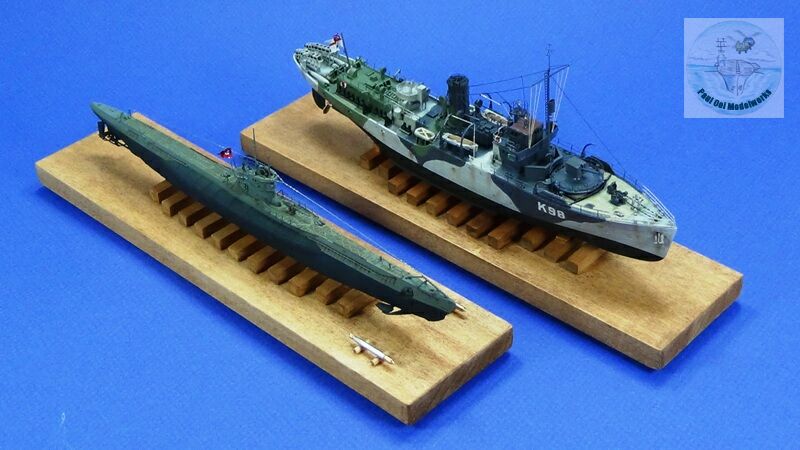
The Battle of the Atlantic during WW2 was the single longest continuous campaign of the conflict starting within the first few hours of 1st September 1939 and ended only on the very last hour of Germany’s capitulation in May 1945. It has been my desire to capture the true essence of this brutal war of attrition fought by very brave men on both sides. Instead of the iconic capital warships, I chose to show the workhorses of the campaign, namely the U-Boats of the infamous German wolfpacks and their implacable foe, the corvette escorts of the Atlantic convoys. As the title suggests, the role of the hunter and the hunted are often interchangeable, even in very short succession between the submarine and the sub-hunter corvette.
In this first part, we will focus on the Flower Class corvette, the most numerous of the convoy protectors. HMS Zinnia was typical of that class in 1941. She was launched in March 1941 in Middlesboro, and was lost off the coast of Portugal by August 1941, the victim of U-564, the submarine described in Part 2 of this feature. The Flower Class corvette was custom designed as an anti-submarine hunter with almost half of the ship dedicated to depth charge launching equipment. She was also equipped for some surface action with a 4 inch main gun and a 40mm Bofors AA-gun. Zinnia is painted in the Royal Navy 3-color pattern called Admiralty Dark Disruptive – 1941.
Gallery

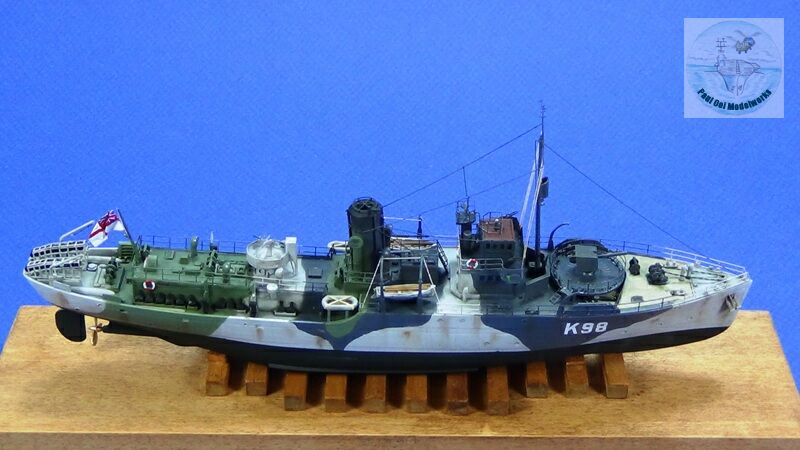


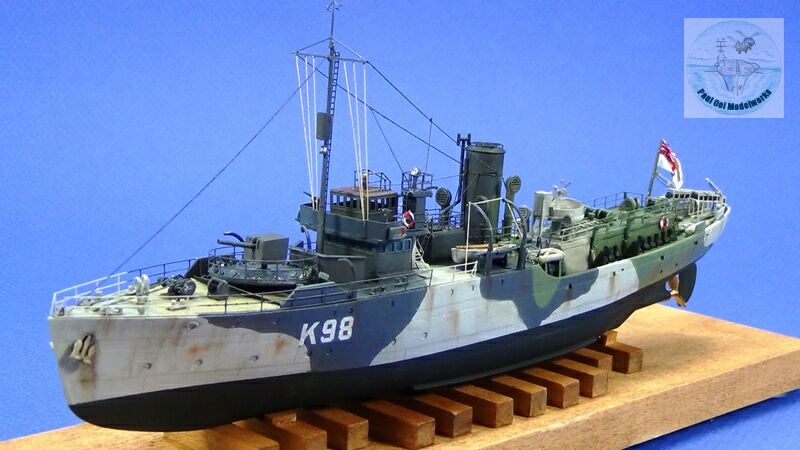
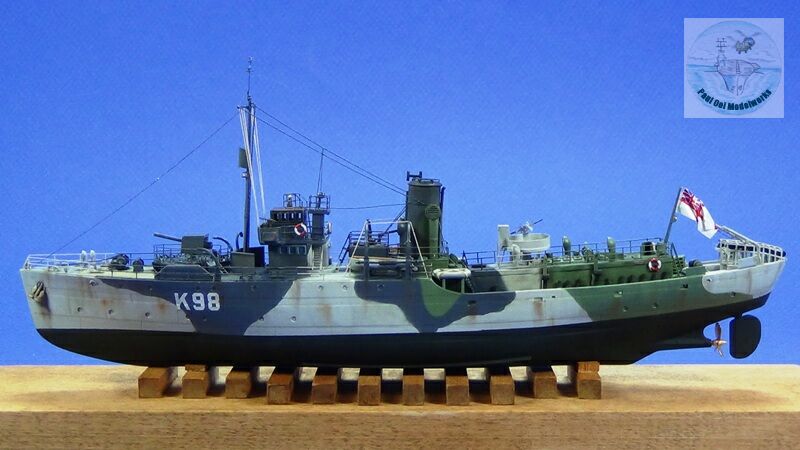
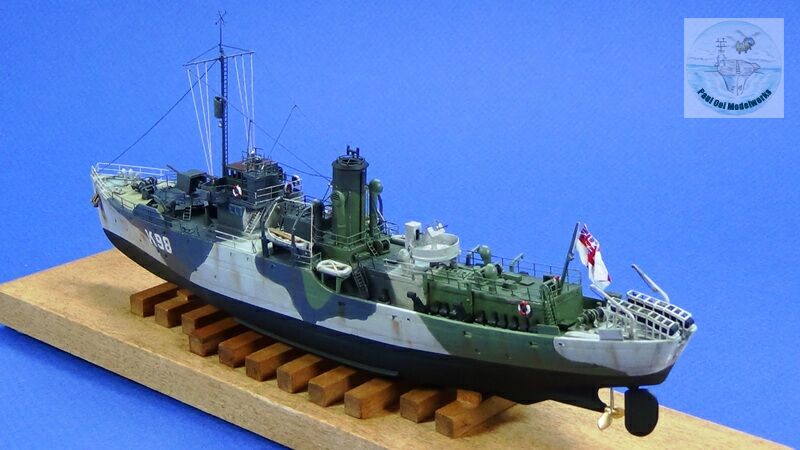

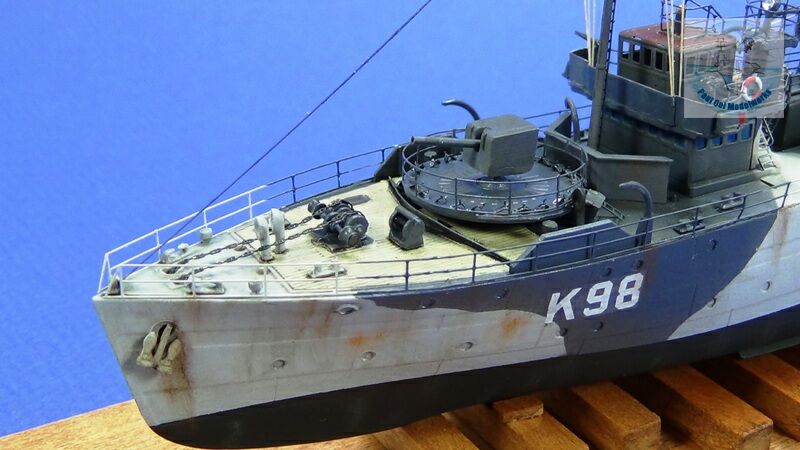
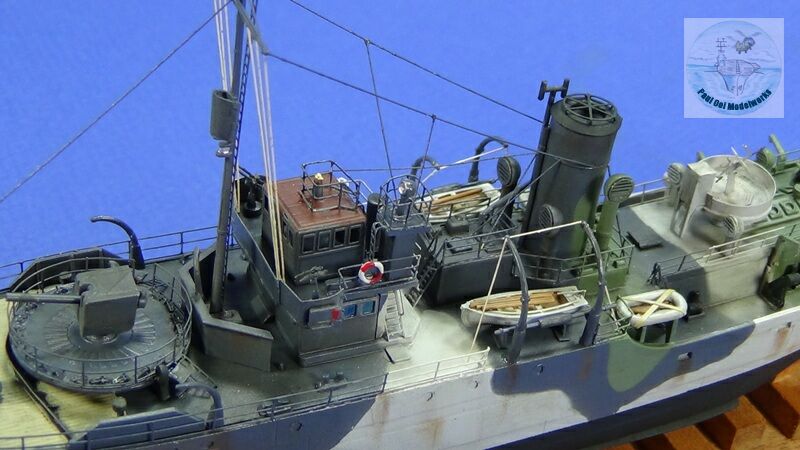
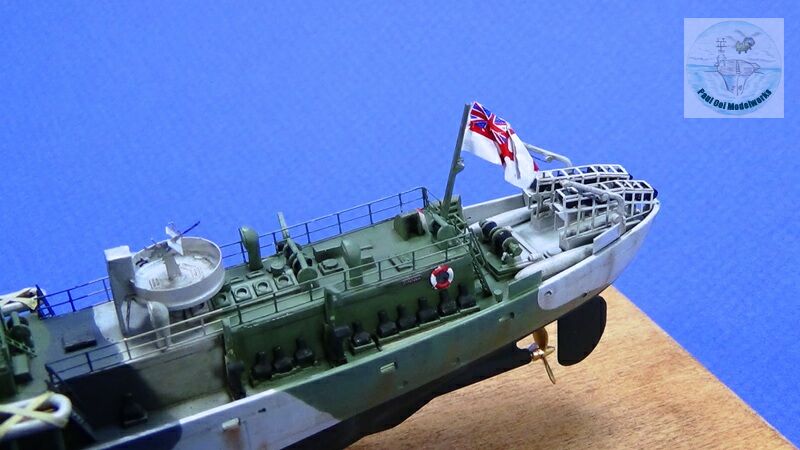
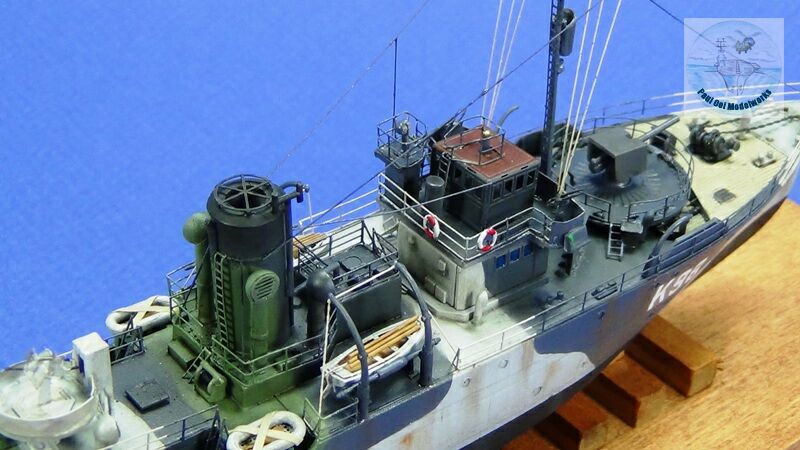
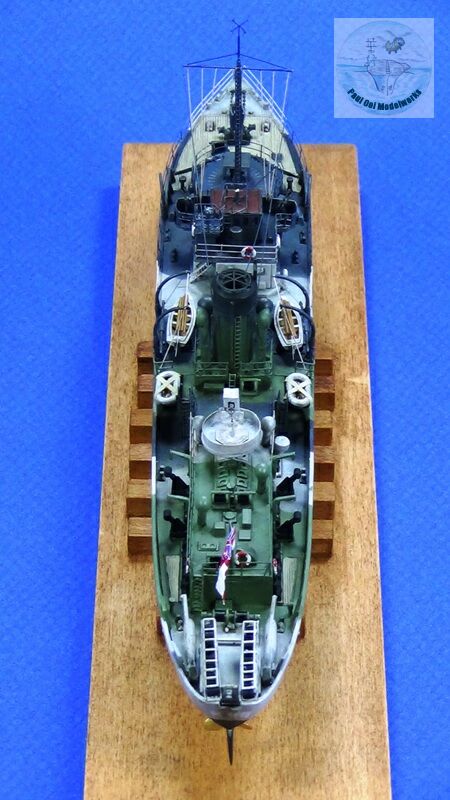


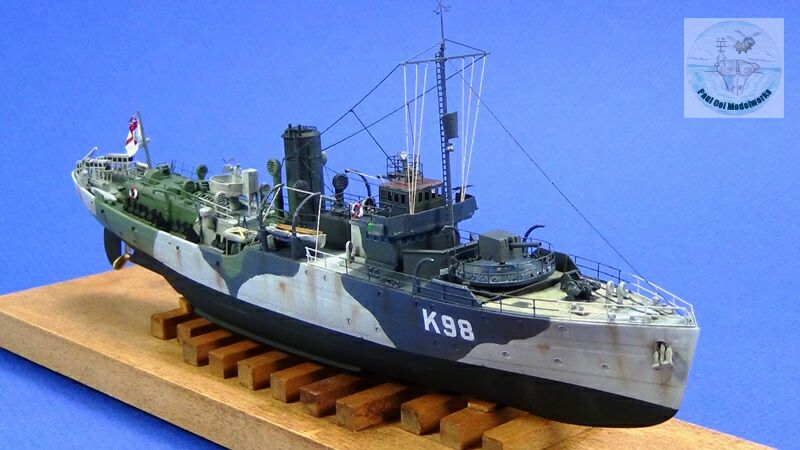

Construction Notes

The Polish model company Mirage Hobby issued this very popular 1/350 scale kit of HMS Zinnia, and have since then issued several other ships of the Flower Class in their various versions. The parts are well-detailed although the instructions can be a little sketchy on the actual location of deck features. Several items are a little thick for that scale and could be improved either with brass parts or some thinning with a razor. I also obtained White Ensign’s dedicated photo-etched fret of parts that could be used to build several other versions of the Flower Class corvettes.

Starting with the bare hull, the main deck structures are attached and the joints filled with putty and sanded to remove the more obvious seams.

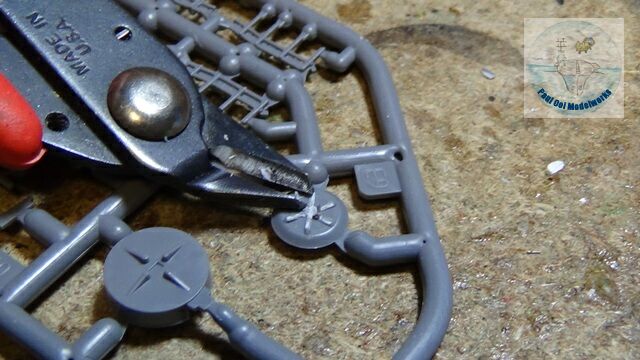

Improvements to some small but important details:
1. Removal of “Aztec” staircase from the bridge structure, to be replaced later with a photo-etched staircase
2. Removal of molded details on the funnel cap, also to be replaced by a photo-etched “cage”
3. Replacement of the plastic main gun barrel with a 1/32 x .006 brass tube

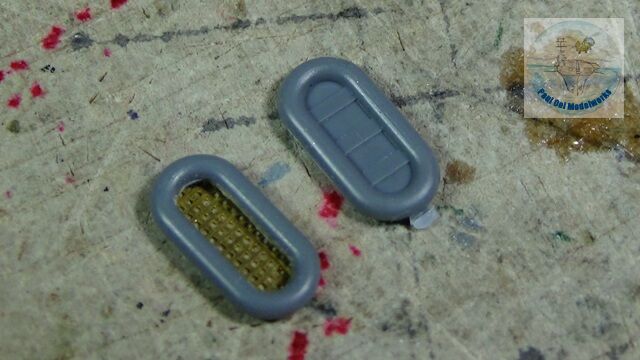
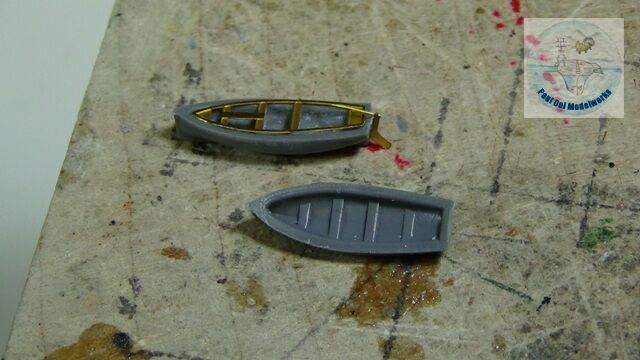
More fiddly details pre-built but not mounted on the deck until after the main camouflage has been painted on the hull:
1. Replacement of kit depth charge racks with these exquisite photo-etched ones
2. Lift raft deck replaced with more accurate matting
3. Whaleboat details enhanced with rudder and bench details




No, it’s not the attack of the orange blob although it certainly looked like it. I used “Silly Putty” to mask the irregular camouflage pattern after initially spraying the lightest color, Royal Navy 507C (Model Masters enamel). The next color is an approximation of the Royal Navy G5. In this case, I found Model Masters SAC Bomber Green FS34159 struck just the right balance and shade when compared with the RN color chips. Lastly, I applied Model Masters Royal Navy 507A, an almost bluish dark grey shade. Some sources calling for a blue like Luftwaffe Blue are incorrect.


Removing all putty mask, I re-masked with tamiya masking tape and applied Tamiya NATO Black XF69, my favorite VERY dark grey instead of Flat Black because in scale models, the grey looks right with scaling effect (how did we survive before these colors came out?). At the end of this, the hull is ready for the attachment of the appendages and fiddly bits.


To fill the depth charge racks in the poop deck, I used plastic rod (1.5mm diameter) cut in 2 mm segments and painted black. The effect is pretty magical.



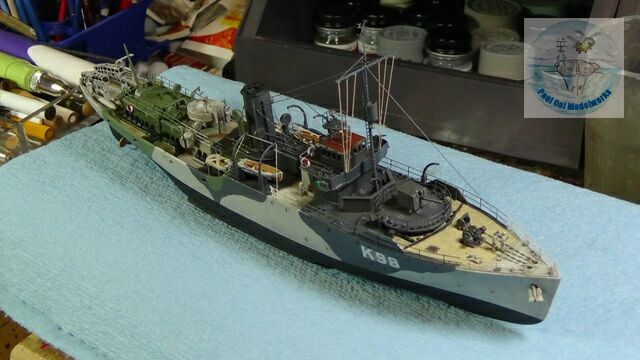
The outfitting work was done over a 2-week period, with all kinds of minute details added starting with hull decals (sealed with satin varnish), a full wash of grey-brown (1:1 NATO Black: Red Brown), lifelines all around deck superstructures, the gun deck platforms, main mast and of course rigging.

Special mention about adding the anchor chains around the winches and then inserting into the hawser pipes running down to the anchors. Although a pain in the neck, the effect is pretty realistic!

Finally, the completed model is mounted on my favorite method of displaying full-hulled vessels on dry-docking blocks like they would appear in real-life. I then apply the final weathering of pastel pigments for rust and salt stains.


you are a maniac… right on!!!
Hello, Paul,
Once again, a superb job in every respect (historical authenticity, customization and superb craftmanship). One look at this relatively diminutive vessel and I immediately pondered just how perilous these craft must have been for their crews in persistent North Atlantic gales with 30 – 40 feet swells. So I went to Wikipedia (link below):
http://en.wikipedia.org/wiki/Flower-class_corvette
According to this article, Flower Class corvettes were indeed (with their relatively shallow draft, rounded hulls and small size (208 feet long w. a 33-foor beam) prone to severe “wallowing” in heavy seas. They routinely rolled up to 40 degrees from vertical and breaking waves soaked every inch of the decks forward of the bridge, causing water to permeate below decks such that it was perpetually wet and cold in all living quarters. There was no refrigeration or icebox in the galley, so all food was preserved “dry rations” (such as corned beef, reconstituted potatoes and canned goods).
Yet this Wikipedia article claims that not a single Allied sailor was lost overboard from any corvette during the war in a non-combat environment. On the other hand, in addition to the Zinnia, 30 other corvettes were sunk by enemy action (including 22 torpedoed by U-boats) and another five were lost to accidents at sea (mostly in collisions with much larger ships in the convoys).
The men who served on these corvettes are certainly among the “unsung heroes” of WWII. Even their non-combat environments were relentlessly brutal, dangerous and utterly miserable. Yet they were instrumental in winning the Battle of the Atlantic – on which hinged the very survival of Britain from 1939 through at least 1943. The massive Allied bombing campaign of Occupied Europe would not have been possible without these brave sailors and their plucky little ships.
Hi Dave,
thanks for adding your detailed comments.
Paul
I am/was building HMS Spiraea and frankly it has been a disaster, I am not impressed. Its an awesome subject for a kit and I would have bought another had things gone easier but so far it has been a litany of broken parts, stuff that doesn’t fit and a whole wodge of other complaints. Mine will never be anywhere near your masterpiece, gads, you have done an amazing job. I have built numerous kits before so am not a newcomer to model building, but when I compare her to the quality of Tamiya or even Revell it just doesn’t compare. Mine came with some laser cut railings etc, but frankly I doubt of I will ever complete the kit, after all so much has been broken trying to free it from the thick sprues.
However, you kit is stunning. well done.
Dear sir,
I am sorry to hear about your difficult build. Even the best of us encounter kits that didn’t quite bond with us, despite our best efforts. Believe me when I say that you are in good company and that I have had several that I did not care for as well. The Eastern European kits are very different in their construction and fit as compared to the ones from Tamiya or Hasegawa. You have to “view the assembly differently” is one way to say it. It gets even more challenging with the short runs. I hope your next build works out better for you.
Paul
Hi Paul,
What a wonderful model!
I believe I have the same model,given to me by my sister.I have never been able to open the box though as this was the ship that my grandfather served on and sadly died on.
I wish my father could have seen these pictures! It’s literally brought tears to my eyes!
An excellent job!
Thank you for making these photos available.
Nick
Fantastic model, well done. My Grandfather was lost on the Zinnia unfortunately my Father died in 2016 he would have loved to have seen this. Jim Manson. Shetland Islands
Sorry to hear of both your grandfather and the more recent loss of your father. I had a lot of fun building the Zinnia but it must have been dreadful misery for those having to work onboard as the Flower Class corvettes were “wet” ships, meaning they get easily awashed with the waves and sprays.
Paul
What did you use for the anchor chain? Was it supplied in the kit? Thanks for your help,
Skip H
The anchor chain came with the White Ensign photoetch set.
Paul
Hi
Very interesting your build of the H.M.S.Zinnia My father servd on H.M.S. Devonshire during WW2 and I have been looking for a model to build.I have found an Airfix model of H.M.S. Suffolk another county class cruiser very similar but I would prefer a larger scle.Have you any suggestions?
Regards Craig
Hello Craig,
Zinnia belongs to the Flower Class corvettes. The largest model kit for a Flower Class you can get is Revell’s 1/72 scale HMCS Snowberry K166. Good luck looking!
Paul